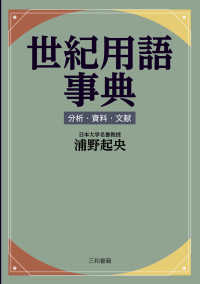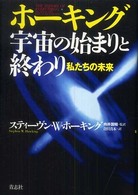- ホーム
- > 洋書
- > 英文書
- > Biography / Autobiography
Full Description
Werner Senn's Conrad's Narrative Voice draws on the methodology of linguistic stylistics and the analysis of narrative discourse to discuss Joseph Conrad's perception of the role and the limitations of language. Tracing recurrent linguistic patterns allows Senn to demonstrate that Conrad's view of the radical indeterminacy of the world is conveyed on the most basic levels of the author's (often criticised) verbal style but permeates his work at all levels of the narrative. Detailed stylistic analysis also reveals the importance, to Conrad, of the spoken word, of oral communication. Senn argues that the narrators' compulsive efforts to make their readers see and understand reflect Conrad's ethics of human solidarity in a world he depicts as hostile, enigmatic and often senseless.
Contents
1. Introduction
2. Vocabulary and Language of Fact
The Adjectival Style
The Adjectival Series
3. Negation, Privation, Absence
The "Negative" Adjectives: Range and Types
The Deverbal Negative Adjective in Context
Negative Elements and Series
4. Sight and Insight
Seeing
Perception and Cognition: Marlow
Epistemology and Point of View: "Typhoon"
5. Physiognomy: Eyes, Faces, Looks
Author, Narrator and Character as Physiognomists
The Language of Eyes, Faces, and Looks
6. Character Reference
Naming and Point of View
Names, Appositions, and Substitutions
7. Conjecture, Estrangement, and Distancing
The as if-Locution
Modification in First Person Narrative
Modification in Third Person Narrative
Modalization by seem and appear
8. Free Indirect Style
Forms and Functions of Free Indirect Style
Free Indirect Speech and Thought in Nostromo
9. Conclusion: Narrative Voice
Appendix: Tables
Bibliography
Index







